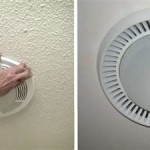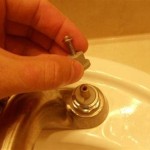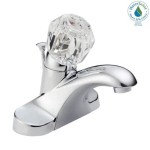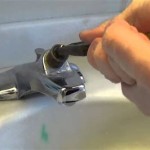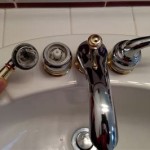How To Get Rid Of Bad Odour From Bathroom
The bathroom, a space intended for cleanliness and hygiene, can paradoxically become a breeding ground for unpleasant odours. These odours can stem from a variety of sources, ranging from stagnant water and mould growth to plumbing issues and improper ventilation. Effectively eliminating these unwanted smells requires a systematic approach, encompassing identification of the source, thorough cleaning, and preventative measures.
Addressing bathroom odours is not merely about masking the smell with air fresheners. While these products can provide temporary relief, they fail to tackle the underlying cause. A comprehensive solution involves a multi-pronged strategy, focusing on eliminating the source of the odour and implementing measures to prevent its return. This article outlines a step-by-step guide to effectively rid your bathroom of bad odours and maintain a fresh and clean environment.
Identifying the Source of the Odour
The initial and perhaps most crucial step in eliminating bathroom odours is pinpointing their origin. Common sources include the toilet, drain pipes, shower, and damp surfaces. Each source requires a specific approach for effective odour removal.
Toilet: The toilet is a prime suspect for foul smells. Issues can range from simple build-up of urine and waste to more complex problems within the tank or plumbing. Check for visible stains and residue around the base of the toilet and inside the bowl. A malfunctioning wax ring, which seals the toilet to the floor, can allow sewer gases to escape, resulting in a persistent and unpleasant odour. Investigate whether the toilet flushes properly. A slow or incomplete flush can leave behind waste that contributes to odour build-up.
Drain Pipes: Bathroom drain pipes, particularly those under the sink and in the shower, can trap hair, soap scum, and other debris. This organic matter decomposes, creating a breeding ground for bacteria that emit foul odours. P-traps, the curved section of pipe under the sink, are designed to hold water, which prevents sewer gases from rising into the bathroom. If the P-trap dries out, sewer gases can easily escape. Infrequently used sinks and showers are particularly susceptible to this problem. Additionally, clogged or partially clogged drains can lead to stagnant water and increased odour production.
Shower: The shower environment, characterized by moisture and warmth, is ideal for mould and mildew growth. These fungi thrive on soap residue, shampoo, and skin cells, releasing musty and unpleasant odours. Check the grout lines between tiles, the showerhead, and the shower curtain or door for signs of mould or mildew. Standing water in the shower floor or around the drain can also contribute to odour problems.
Damp Surfaces: Persistent dampness in the bathroom can lead to mould and mildew growth on walls, ceilings, and even fabrics like bath mats and towels. Look for water stains, peeling paint, or discolouration, which are indicators of moisture problems. Insufficient ventilation further exacerbates the issue, trapping moisture and creating a favourable environment for mould and mildew.
Other Potential Sources: Beyond the primary suspects, other factors can contribute to bathroom odours. Dirty bath mats, unwashed towels, and overflowing wastebaskets can all harbor bacteria and emit unpleasant smells. Cleaning supplies stored in the bathroom can also contribute to odours if not properly sealed or if they contain strong chemicals.
Effective Cleaning and Disinfection Techniques
Once the source of the odour has been identified, thorough cleaning and disinfection are essential. Different cleaning agents and techniques are required for different surfaces and types of odours.
Toilet Cleaning: Regular cleaning of the toilet is crucial. Use a toilet bowl cleaner to scrub the inside of the bowl, paying attention to areas below the waterline. For stubborn stains, consider using a pumice stone, which can safely remove mineral deposits without scratching the porcelain. Clean the exterior of the toilet, including the base and the tank, with a disinfectant cleaner. If you suspect a wax ring problem, it may require professional replacement. If the toilet flushes poorly, investigate the flapper valve inside the tank. A worn or damaged flapper can prevent a complete seal, leading to water leakage and inefficient flushing.
Drain Cleaning: Regularly flush drain pipes with hot water to help prevent build-up. For minor clogs, baking soda and vinegar can be an effective natural solution. Pour one cup of baking soda down the drain, followed by one cup of vinegar. Let the mixture fizz for about 30 minutes, then flush with hot water. For more severe clogs, consider using a drain snake or plumbing snake to physically remove the obstruction. Chemical drain cleaners can be effective, but they should be used with caution, as they can damage pipes and pose health risks. If drain odour persists, it may indicate a more serious plumbing issue requiring professional attention.
Shower Cleaning: Clean the shower regularly with a mildew-killing shower cleaner. Pay particular attention to grout lines, which are prone to mould growth. Use a scrub brush or grout brush to remove visible mould and mildew. For stubborn stains, bleach can be used, but it should be diluted and used with caution, ensuring adequate ventilation. Clean the showerhead by soaking it in vinegar overnight to remove mineral deposits that can harbour bacteria. Replace shower curtains or liners if they are heavily soiled or exhibit significant mould growth. Clean shower doors with a glass cleaner designed to remove soap scum.
Surface Cleaning: Clean all bathroom surfaces, including walls, floors, and countertops, with a disinfectant cleaner. Pay attention to areas that are prone to dampness, such as around the sink and shower. Wipe down surfaces with a dry cloth after cleaning to prevent water spots and further mould growth. Wash bath mats and towels regularly in hot water with a disinfectant laundry detergent.
Air Purification: After cleaning, consider using an air purifier to remove lingering odours and improve air quality. Air purifiers with HEPA filters can effectively trap mould spores and other allergens. Alternatively, open a window to ventilate the bathroom and allow fresh air to circulate.
Implementing Preventative Measures
Preventing bathroom odours is just as important as eliminating them. Simple preventative measures can significantly reduce the likelihood of recurring odour problems.
Ventilation: Proper ventilation is essential for removing moisture and preventing mould growth. Ensure that the bathroom exhaust fan is functioning correctly and use it during and after showers and baths. If the bathroom does not have an exhaust fan, consider installing one. Opening a window while showering can also help to ventilate the space.
Regular Cleaning Schedule: Establish a regular cleaning schedule to prevent the build-up of dirt, grime, and mould. Wipe down surfaces regularly and clean the toilet and shower at least once a week. Empty the wastebasket frequently to prevent unpleasant odours. Periodically check drain pipes for clogs and flush them with hot water.
Moisture Control: Minimize moisture build-up by wiping down wet surfaces after use. Hang towels and bath mats to dry properly. Repair any leaks promptly to prevent water damage and mould growth. Consider using a dehumidifier to reduce humidity levels in the bathroom, especially in humid climates.
Product Selection: Choose cleaning products specifically designed for bathroom use. Look for products that contain mildew-killing agents and disinfectants. Avoid using abrasive cleaners that can damage surfaces and create crevices where dirt and bacteria can accumulate. Dispose of cleaning supplies properly to prevent leaks and spills that can contribute to odours.
Routine Maintenance: Regularly inspect the toilet for leaks or malfunctions. Check the wax ring for signs of damage and replace it if necessary. Ensure that the drain pipes are properly sealed and that the P-trap is functioning correctly. Periodically clean or replace the showerhead to prevent mineral build-up and bacteria growth.
By consistently implementing these preventative measures, you can maintain a fresh and clean bathroom environment and minimize the risk of unpleasant odours.

7 Indispensable Bathroom Smell Remover S In Housekeeping

How To Get Rid Of Sewage Smell In Your Bathroom Bond Cleaning Adelaide

6 No Fail Ways To Get Rid Of Smells In Bathroom Artsy Fartsy Life

How To Get Rid Of Bathroom Odors Bob Vila

How To Make Your Bathroom Smell Good 10 Genius S Get The Stink Out Bright Side

How To Make Your Bathroom Smell Good 10 Genius S Get The Stink Out Bright Side

6 Easy Ways To Manage Foul Bathroom Odor Microbialogic

How To Get Rid Of Bathroom Odors Bob Vila

How To Make Your Toilet Smell Nice 10 Easy S

Smelly Bathroom 4 Tips From Our Bentleigh Plumbers Watermaster Plumbing
Related Posts

